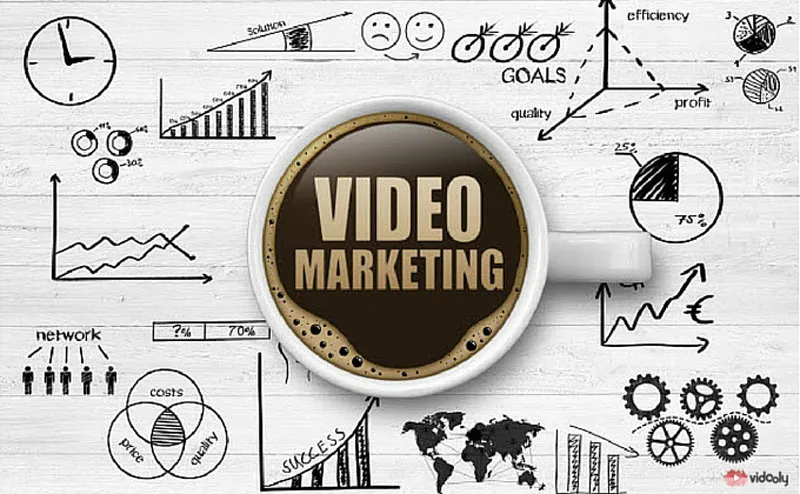9 affordable video marketing strategies for startups in 2016
Launching a startup is a great feeling. You get an idea and then you rear it like your own baby and nurture it into reality through hard work and dedication. But that’s not the end of it! In fact, that’s when the actual work starts. The marketing approach you follow during the early stages of your startup might decide its success or failure.
In today’s digital marketing arena, video can be a great source of brand marketing and building. But, mastering video marketing can be a tough proposition. You need to have a precise, well-thought-out plan to make it work. In this article, I’ll list tips that can help any startup get going with video marketing to build a solid online presence. Right from the creation of the video, to marketing and using it for audience engagement, I’ll cover them all.

- Video creation
Just a few years ago, commissioning a video to advertise a product/service used to be a Herculean task! First, you had to find a solid scriptwriter and get the storyboarding done. Then, you had to find the right actors to star in the video, get a crew to shoot the whole thing, take it to the editing table and then finally it would be done.
But times have changed for good. Now you don’t have to spend a lakh to get a video created. You can commission a video on Fiverr for just $100 to $500 and get your video done within a week.
How did this happen? Well, there was never a dearth of creative video makers in the world but accessible hardware was always a cause of concern till a few years ago. But rapid technological innovation in the entertainment space has changed the whole ecosystem. Who needs a professional camera to make videos now? The latest iPhone comes with a camera capable of recording 4,000 videos! Who needs an editing studio now? Tools like Animoto and Powtoon allow you to easily edit videos anywhere and anytime.
- Hire video content creators
On platforms like YouTube and Vine, you can find original video content creators who can do scripting and storyboarding for you at a relatively lower cost and with faster turnaround time. They can also take care of the actors and editing for you. All you have to do now is promote and market the video and sometimes, even that is taken care of by the creators.
If you want to do some research and find the right creators who can make a video for you, use tools like Vidooly’s Creator Wizard.
Examples:
Dollar Shave Club and Will it blend video series are great examples of how videos can actually “build” successful brands.
Dollar Shave Club:
Will it blend:
- Distribution
After getting the video done, you need to distribute it in places that matter. There are many video sharing and distribution sites out there and you need to decide and shortlist the ones that can work for you. YouTube, Facebook and Vine can be great platforms for increased visibility for any kind of business. Others like Dailymotion and Vimeo can be good for you if you are a media agency or a production house.
If your video is useful and entertaining enough, these platforms will give you the reach organically. You don’t even have to spend a dime to promote it. Well, of course you can spend a bit of money and give it a little extra push, but that’s up to you. If you ask me, YouTube and Facebook are by far the best options currently.
- Optimisation and marketing
After getting the video created and uploading it on platforms of your choice, you need to optimise it to give it the maximum reach. If you have a YouTube channel, upload the video there and follow all the best practices to ensure that the video not only gets a lot of eyeballs, it also reaches the right audience. Use annotations and cards in the right places to divert the viewer to your website. Use the right keywords in your title and use the best tags to increase the search volume for your videos.
You can also target your prospective audience through paid advertising on Facebook and YouTube. YouTube and Facebook video ads can be run on relatively lower CPMs when compared to other websites or owned platforms like blogs. If you manage to get good traction on your video in the initial few days, it’ll have enhanced long-term reachability and engagement.

- Micro video sharing sites
If you want to target an international audience, you should also consider short-form video social platforms like Vine, Snapchat, Instagram and Dubsmash. Though these sites aren’t as big in India, they have a huge user base in the West, especially with the millenials.
In today’s fast-paced world where the attention span of people has dramatically reduced, utilising these popular channels can give a lot of visibility to your content. Because these services are built exclusively for smartphones, you might not find it useful if you’re targeting older demographic.
Do keep it in mind that shorter time limit on the content on these platforms (six seconds on Vine and 15 seconds on Instagram) can be challenging. You need to think creatively to squeeze in your message in such a short duration.
Here’s a great example on how brands can use Vine:
Sony’s Inception Vine: The ad takes viewers inside the frame of the phone, inside that phone and then back again.
Snapchat is another great product that can help promote your brand. Its biggest draw is its 100 million active daily users. Not many brands have cracked Snapchat marketing yet but they’re slowly warming up to it. Taco bell used it to promote the re-release of its Beefy Crunch Burrito. Huffington Post uses it for brand building.
- Live video streaming
For startups, live video can be a great tool to build communities, encourage audience engagement and interact with its fans and followers. If a startup has a new product or partnership announcement coming up, building excitement around it can be easier by scheduling a live video stream. Live interviews of the founders where they explain their journey in building the company can also be a powerful video content which will be interesting for everyone.
- Educate, engage and entertain
One of the biggest mistakes that startups or even established brands do while creating marketing videos is that they always correlate any brand video to a brand advertisement. Well, gone are the days when promotional videos had to be advertisements. Nowadays, any video which educates, entertains and engages your potential customers can be a promotional video.
This is why you should chalk out a plan to create such 'infotaining' video content regularly. If you are a clothing brand, you need to upload a lot of DIY content (eg: 'How to wear a saree') which will draw a lot of eyeballs, especially from foreign shores. If you are an educational channel, you need to regularly come up with informative and how-to type videos.
If you run an e-commerce company, Vat 19 can be a great example that you can emulate. It is an e-commerce company where one can order unusual but awesome gifts. Its YouTube channel has almost two million subscribers and 10 per cent of the overall traffic to its website is driven by just YouTube.
- User-generated content
Consumers are always more interested in hearing the views of their peers than the clever sales pitches of marketers. That’s why user-generated content (UGC) can be a great way of building trust and engagement. If you analyse the top 100 videos on YouTube, Facebook and Vine, 30 per cent of videos on YouTube, 50 per cent of videos on Facebook and 17 per cent of videos on Vine are UGC.
A thorough research of all video platforms can help you identify content creators who can relate to your brand. Then you need to analyse and find out if there is a theme or story in these videos that can strike a chord with your target audience.
AirBnB’s Vine campaign is a great example on how brands can use UGC. They crowd-sourced a whole bunch of Vines and created the first-ever short film made completely of Vines.
- Don’t miss out on Facebook video
If you do all the hard work, get the video created and then only use it on YouTube, you’re missing out on one of the most important channels of video distribution. I’m not talking about using the YouTube video and promoting on Facebook; I’m talking about uploading the video natively to Facebook so that it stays in your Facebook page’s video content library.
Facebook’s newsfeed algorithm places a lot of weightage on videos now and when a video is uploaded natively, you have a much better chance of it being seen by your target audience.
Buzzfeed is a great example for brands on using Facebook video. It already runs four popular video brands on Facebook – BuzzFeed Video, BuzzFeed Food, Tasty (BuzzFeed) and BuzzFeed Life and is gunning to add some more to its fleet. Collectively, BuzzFeed generated over two billion views on Facebook just in the month of September. Tastemade is another popular Food brand on Facebook and its page has almost six million likes. It looks as if food publishers have found the perfect recipe for success on Facebook. However, 2016 will definitely see publishers from other niche also entering the fray.
Oren Katzeff, Head of Programming, Tastemade, explains, “When you create something that inspires people to create that thing themselves, they want to share it. Content that is inspirational on Facebook can lead to action. People watch what you did, duplicate it, then try to do it themselves.”
If you analyse these video publishers on Facebook, there are some best practices followed by them all. You can also try to incorporate them in your Facebook video strategy for better results. Here are a few to get you started:
- Majority of these videos are 15-50 seconds long
- Using the right thumbnail is absolutely important. It is actually harder than on YouTube since you have to abide by Facebook’s 20 per cent text rule. So be creative and use as little text as possible in the thumbnail.
- Don’t rely a lot on the audio. Native videos on Facebook play automatically when users scroll past them on their news feed. Therefore, the video should be compelling enough and should deliver its message even without sound.
- You can bypass the NewsFeed and build a library of videos by publishing videos directly to the videos tab. This ensures that interested people can find more video content of your brand.
- Use a Call to Action whenever possible.
Conclusion
As online video continues its stupendous rise, your brand should have a strategy in place to ride the wave. Ease of access to online video advertising mediums has made it much easier for startups to build a brand identity and it’s the perfect time to try your hands at it. Do you have ideas or interesting success stories on startups using video platforms? Do share them with us in the comments.

About the Author:
Subrat Kar: Subrat is the co-founder & CEO of Vidooly, a YouTube marketing & analytics software product for content creators, multi channel networks & brands that help them to grow their online video business organically. He can be reached out at [email protected], follow him on twitter @subratkar
(Disclaimer: The views and opinions expressed in this article are those of the author and do not necessarily reflect the views of YourStory.)







